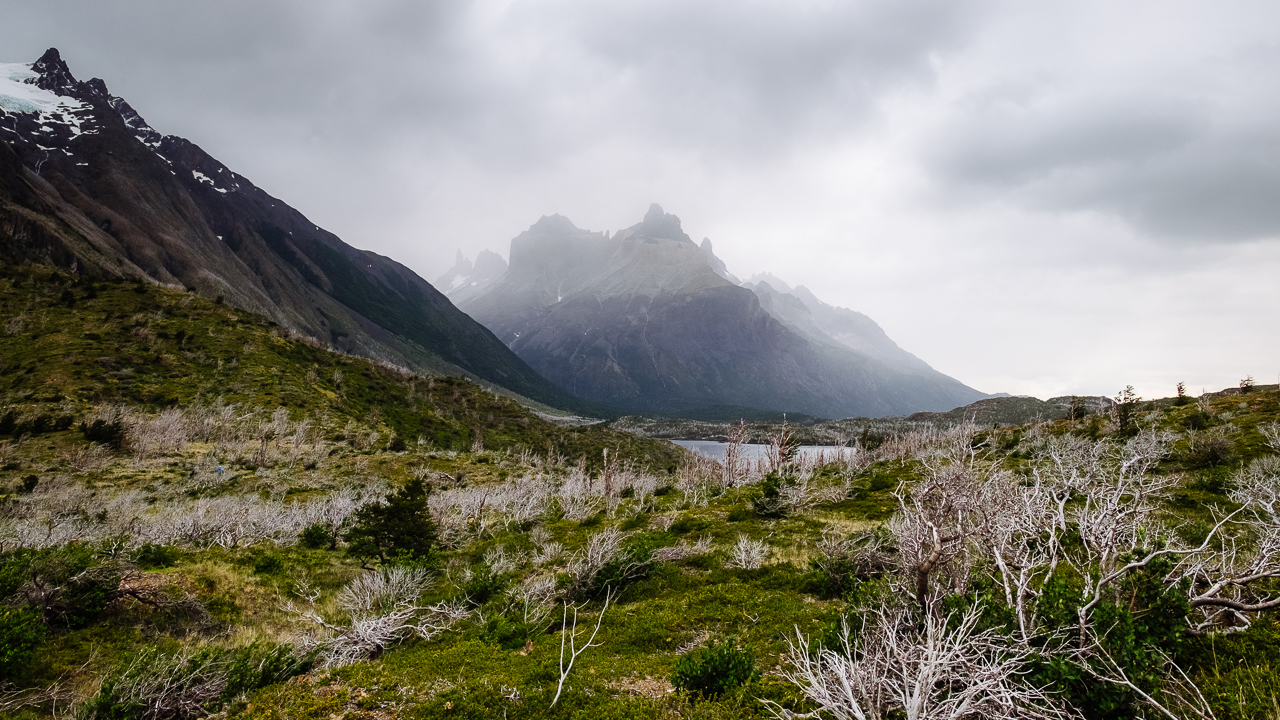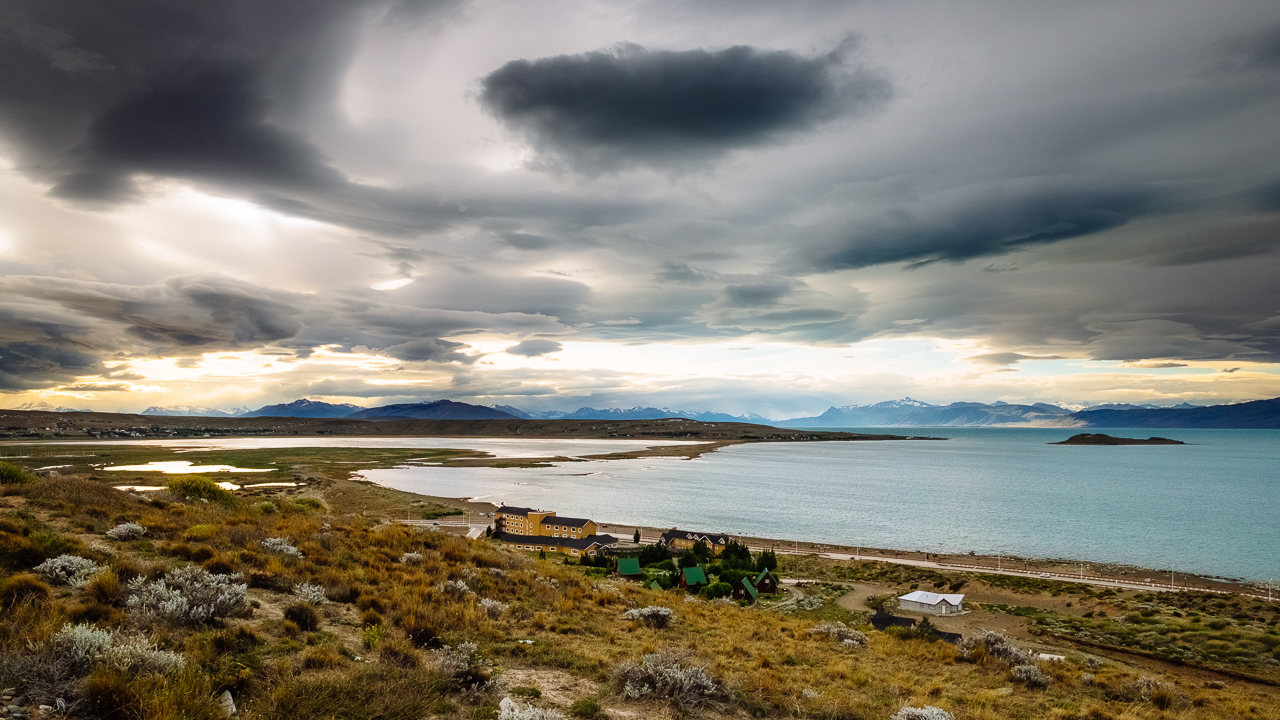Hi !
The first day of trekking started with an 11km journey from Refugio Grey to Refugio Paine Grande, along the Lago Grey, through a vegetation that is not really living the dream, weather condition wise. Here winds are strong and cold. The weather is changing constantly, wet for a few minutes, sunny for a few other. If you consider the rocky sandy soil that sucks water in no time, every single green thing here fights for saving water.
We started by doing a 2km (each way) detour to the first hanging bridge to get a view on the Grey Glacier before we would leave it to reach the Refugio Paine Grande, our overnight stop.

Even though the wind wasn’t the strongest, it lived up to the expectation. All the way to the shelter we were constantly pushed by gusts of 60km/h to 80km/h, sometimes deciding for us where our feet would land. It may sound risky, but apart from a short fall, nothing life threatening here. However the cold feeling was insane. I would say that the air temperature was between 15°C and 18°C, but the wind made it fall below 10°C easily.
As an example, Laguna Los Patos would be the most peaceful still water lake, if the winds wasn’t creating waves like you would have on a sea.

As we progressed, we reached a low pass that connects the Lago Grey side to the Lago Pehoe side, where the winds seemed to accelerate even more. This part was actually fast to cross, with such a push in the back.

Once we reached the Refugio Paine Grande (which is another five-stars hotel more than a shelter), we were rewarded by an insane view on the Paine Grande and the Cuernos (the top photo).
I would add that walking in strong winds with the big backpack proved to be a bit more tiring than I anticipated. It took a while to get used to being push left, right and front (luckily not back, that would be actually very frustrating). Good gears (GoreTex soft shell in particular) are required to keep warm, which makes a huge difference. But that first day been short, with not a lot of elevation gain, it ended up been a pleasant introduction to Torres del Paine famous weather.
Enjoy (or not) and stay tuned !






























